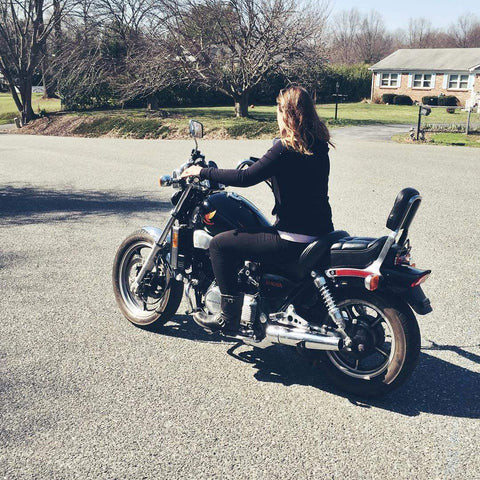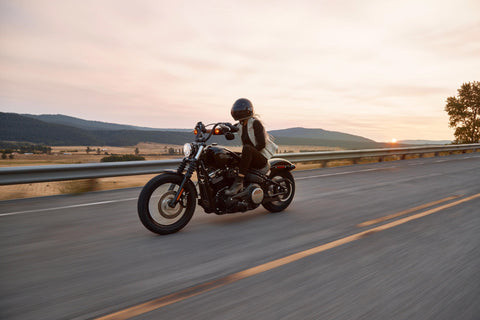Embarking on your motorcycle journey is an exhilarating experience, but selecting the right first bike can feel overwhelming amidst a sea of opinions and advice. Many resources offer guidance, but the concept of the “Best Starter Street Bike” is often misunderstood and generalized. There’s no single, universally perfect beginner motorcycle. The ideal choice is deeply personal and depends on your individual needs and aspirations.
As a new rider navigating countless options, it’s easy to feel lost. However, with the right approach, you can confidently navigate these choices and find a motorcycle that’s not only manageable but also perfectly suited to you. This guide will help you filter through the noise and pinpoint the best starter street bike tailored to your unique circumstances and riding goals.
The Rider Factor: It’s All About You
Forget generic recommendations for a moment. The most crucial element in choosing your first motorcycle is you. Every rider brings a unique set of characteristics and objectives to the table. Understanding your personal motivations and physical attributes is the first step in making an informed decision. Ask yourself these key questions to begin your personalized selection process:
- Why are you drawn to riding? Is it for commuting, weekend leisure, adventure touring, or the thrill of speed?
- What do you hope to achieve with motorcycling? Are you aiming for cross-country trips, mastering technical skills, or simply enjoying local rides?
- Which motorcycle styles visually appeal to you? Are you drawn to the sporty aesthetics, classic looks, or rugged adventure styles?
- How do you typically learn new skills? Are you a quick study, or do you prefer a more gradual learning curve?
- What is your height and build? This will influence comfort and bike maneuverability.
- What is your weight? Heavier riders might consider slightly larger displacement for better performance.
- What is your budget for purchasing a motorcycle and gear? Factor in not just the bike cost, but also essential riding gear, insurance, and maintenance.
Prioritize Your Needs, Trust Your Instincts, and Explore Different Options
Key Features of Beginner-Friendly Motorcycles
While personal preference is paramount, certain motorcycle characteristics are generally considered beneficial for beginners. These features contribute to easier handling, control, and a more forgiving learning experience. However, remember these are guidelines, not strict rules.
 Team EARPEACE member Lemon on her first road bike, a 1985 Honda Magna, showcasing a classic and approachable starter bike.
Team EARPEACE member Lemon on her first road bike, a 1985 Honda Magna, showcasing a classic and approachable starter bike.
Engine Displacement: Manageable Power is Key
Engine displacement refers to the total volume swept by the pistons inside the engine cylinders, essentially indicating engine size and power output. The number of cylinders also significantly impacts a bike’s character and power delivery. For instance, a high-revving inline-four 600cc sportbike will feel drastically more powerful and aggressive than a torquey parallel-twin 650cc standard bike, even with similar displacement figures. While delving into engine mechanics is fascinating, for now, understand that a bike with manageable, predictable power is much easier to control as you learn. Smaller displacement bikes are generally more forgiving of rider errors, which are inevitable during the learning process.
Conversely, some argue that beginners quickly outgrow smaller bikes and should start with a mid-sized machine. This might hold true for riders with prior experience or those seeking immediate highway capability. Mid-size bikes often offer better highway cruising comfort and potentially upgraded components like suspension and brakes. However, your first bike is primarily a learning tool and a stepping stone. “Outgrowing” it is a natural part of rider progression.
If you feel apprehensive about motorcycle power or prefer a relaxed learning pace, start with a smaller displacement bike, typically in the 250cc to 400cc range. If you’re eager for more spirited riding or are a larger individual, you might consider the 500cc to 650cc category. But always remember that engine size alone doesn’t tell the whole story.
Common street bike engine configurations include single-cylinder, parallel-twin, V-twin, triple-cylinder, V4, and inline-four. Each engine type possesses distinct performance characteristics and feel. Exploring these differences is part of the fun of motorcycling. However, parallel-twin engines are widely considered exceptionally beginner-friendly due to their linear power delivery. This means the power and speed increase smoothly and predictably as you open the throttle, offering excellent control. Single-cylinder engines share this predictable and easy-to-ride nature.
Small to mid-sized bikes with single and parallel-twin engines dominate the entry-level market. Popular examples include the Kawasaki Ninja 400, Yamaha R3, Honda CB300R and Rebel 300, BMW G310R, KTM Duke 390, Royal Enfield Himalayan (400cc single), Husqvarna Vitpilen 401, Suzuki SV650, Ducati Scrambler (803cc L-twin), and Triumph Street Twin (900cc parallel-twin). Virtually any of these are excellent choices in terms of manageable power for a starter street bike.
 Close-up of EARPEACE Moto Pro earplugs, essential gear for rider safety and comfort.
Close-up of EARPEACE Moto Pro earplugs, essential gear for rider safety and comfort.
Seat Height and Weight: Confidence and Control
For many new riders, especially those of shorter stature, a motorcycle’s seat height and overall weight can be significant considerations. While it’s a common belief that being able to flat-foot a bike (placing both feet flat on the ground while seated) is essential, it’s not strictly necessary. As you gain experience and balance proficiency, you’ll become comfortable with techniques like tip-toeing or slightly shifting to one side to plant a foot. Before solely searching for “shortest seat height motorcycles,” realize that seat height specifications can be misleading. The width of the seat and fuel tank also dramatically affect how tall a bike feels. Narrower bikes are easier to straddle, contributing to the beginner-friendliness of single and twin-cylinder models.
Bike weight distribution and center of gravity also heavily influence how manageable a motorcycle feels. Cruisers are often favored by shorter riders and beginners due to their low seat heights and low centers of gravity. Sportbikes and adventure bikes, with their typically higher centers of gravity, can feel top-heavy, especially at low speeds. Standard or “naked” bikes often strike a good balance in terms of weight distribution and seat height.
The best way to assess a bike’s height and weight is to physically sit on various models. Visit dealerships, sit on different bikes, gently rock them from side to side, and determine which feel most comfortable and confidence-inspiring to handle.
Motorcycle Types and Riding Styles: Aligning Bike to Purpose
Motorcycles are engineered for diverse purposes, and each category excels in certain areas while being less suited for others. Consider your riding aspirations: Do you admire MotoGP racers and crave speed? A sportbike like the Yamaha R3 or Ninja 400 might be appealing. Do you dream of long-distance adventures and exploring off-road trails? An adventure bike such as the Royal Enfield Himalayan or Kawasaki KLR 650 would be a better fit. If you appreciate the classic café racer aesthetic, a retro-styled bike like a Triumph Bonneville could be perfect. For those drawn to choppers and the cruiser lifestyle, a Honda Rebel or Harley-Davidson Sportster provides an excellent entry point to the cruiser class. Naked bikes, my personal favorite, are incredibly versatile “Jack-of-all-trades” street bikes, excelling in various riding scenarios from track days to daily commutes.
It’s perfectly acceptable if you’re unsure of your ideal riding style. Learning to ride is a journey of exploration and self-discovery. Your motorcycle can become an extension of your personality and a fantastic form of self-expression.
 A Harley-Davidson motorcycle parked by the roadside, representing the cruiser style and the personal expression associated with motorcycling.
A Harley-Davidson motorcycle parked by the roadside, representing the cruiser style and the personal expression associated with motorcycling.
Budget Considerations: Smart Spending for New Riders
Let’s be realistic: as a new rider, there’s a higher chance you might drop your first bike. It’s a common experience, almost a rite of passage. Many riders, myself included, have had minor mishaps in the initial learning phase. It stings less when it happens to a pre-owned bike that has already weathered someone else’s learning curve. Buying a used bike to learn on, then potentially upgrading later, is a financially sound approach, minimizing depreciation losses. Even if a new bike is within your budget, used motorcycles offer compelling advantages, and the “first drop” factor is just one. The used market is rich with affordable, well-maintained motorcycles.
Crucially, factor in your budget for riding gear. Plan to invest approximately $1,500 for comprehensive, quality protective gear from head to toe. Prioritizing good gear is an investment in your safety. Consider this: skin graft surgery can cost tens of thousands of dollars. Investing in quality riding jeans, jackets, gloves, and a helmet can prevent serious injuries like road rash and significantly reduce potential medical expenses in case of an accident. Protective gear is preventative medicine for your body and your wallet. For further safety insights, explore resources on essential riding gear.
Pro Tip: If you’re financing your motorcycle, many lenders allow you to include the cost of gear and accessories in the loan, making it easier to acquire essential safety equipment.
Insurance costs are another important budget element. Larger displacement bikes and sportbikes typically carry higher insurance premiums. Obtain insurance quotes for your shortlisted bikes before making a purchase to accurately assess the total cost of ownership and factor it into your budget.
ABS Brakes: A Safety Net or Hindrance?
Anti-lock Braking Systems (ABS) are a proven safety technology designed to prevent wheel lock-up during hard braking situations. In emergency braking, riders often instinctively apply excessive brake force, which can lock the wheels and cause a skid, leading to loss of control. ABS modulates brake pressure, preventing wheel lock-up and helping maintain tire traction.
Some experienced riders argue that electronic aids like ABS can make new riders overly reliant on technology and hinder the development of essential braking skills. Mastering safe and effective braking technique without relying solely on electronic assistance is a fundamental riding skill.
The debate on ABS for beginners is ongoing. Personally, I’ve owned multiple motorcycles without ABS and have developed braking skills that give me confidence on any bike. However, ABS undeniably adds a layer of safety. If ABS provides you with greater peace of mind, choosing a bike equipped with it is a valid decision. If your bike lacks ABS, don’t be concerned. Focus on practicing and refining your braking technique. Developing strong fundamental skills and muscle memory will enhance your safety and control on any motorcycle, regardless of technology.
Your Riding Journey Awaits
Armed with this comprehensive guide, you now possess the knowledge to confidently select an excellent first motorcycle. The beauty of these guidelines is that you can also choose to disregard some or all of them and simply select the bike that resonates with you most strongly. Ultimately, learning a new skill is easier when you set yourself up for success, but countless riders have defied conventional wisdom and learned on larger, more challenging bikes. When you’re ready to explore riding destinations, consider researching top motorcycle routes in your region or beyond.
In the end, you can ride any motorcycle you are truly determined to master. Your motivation and perseverance are the most crucial factors. Only you can definitively decide which motorcycle is the right starter street bike for your unique journey. And remember to include quality motorcycle earplugs in your gear to protect your hearing from wind noise and enjoy a more comfortable ride. Embrace the adventure, trust your instincts, and ride safely!
